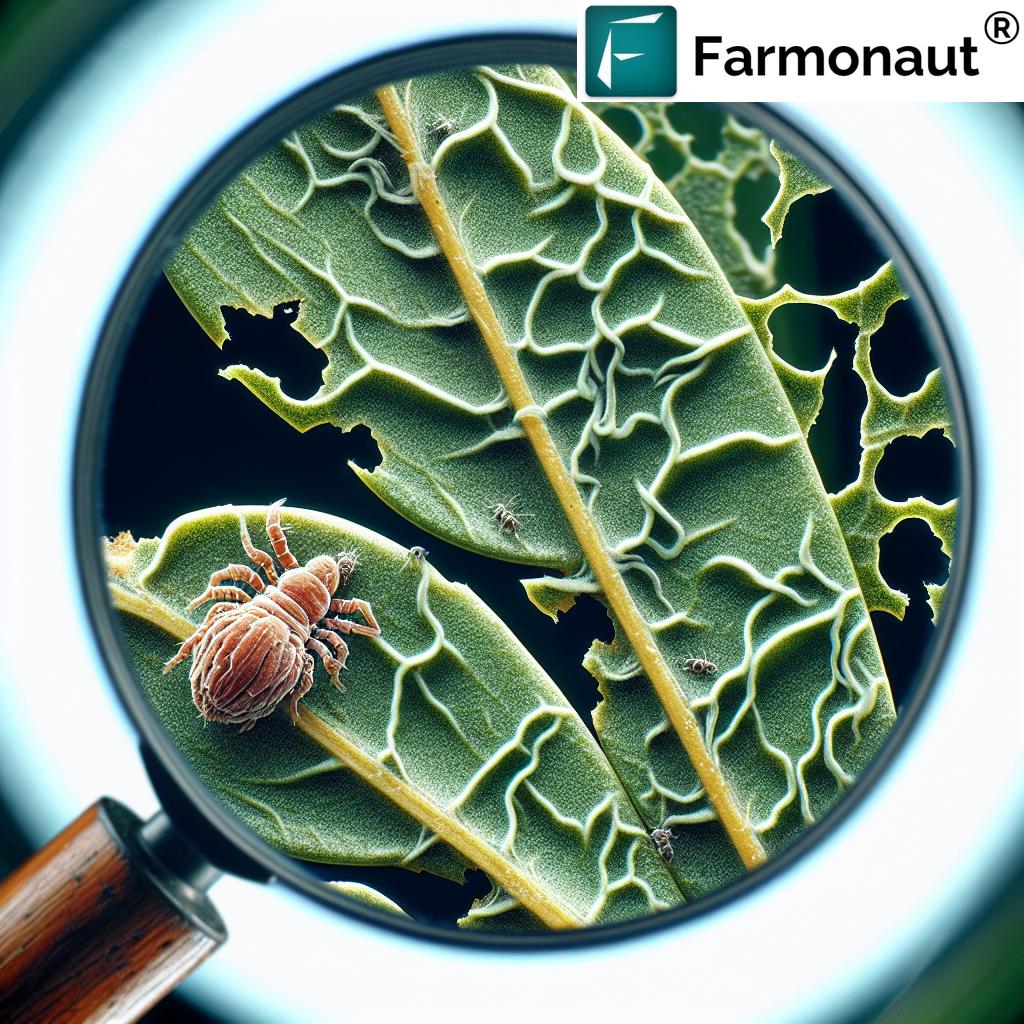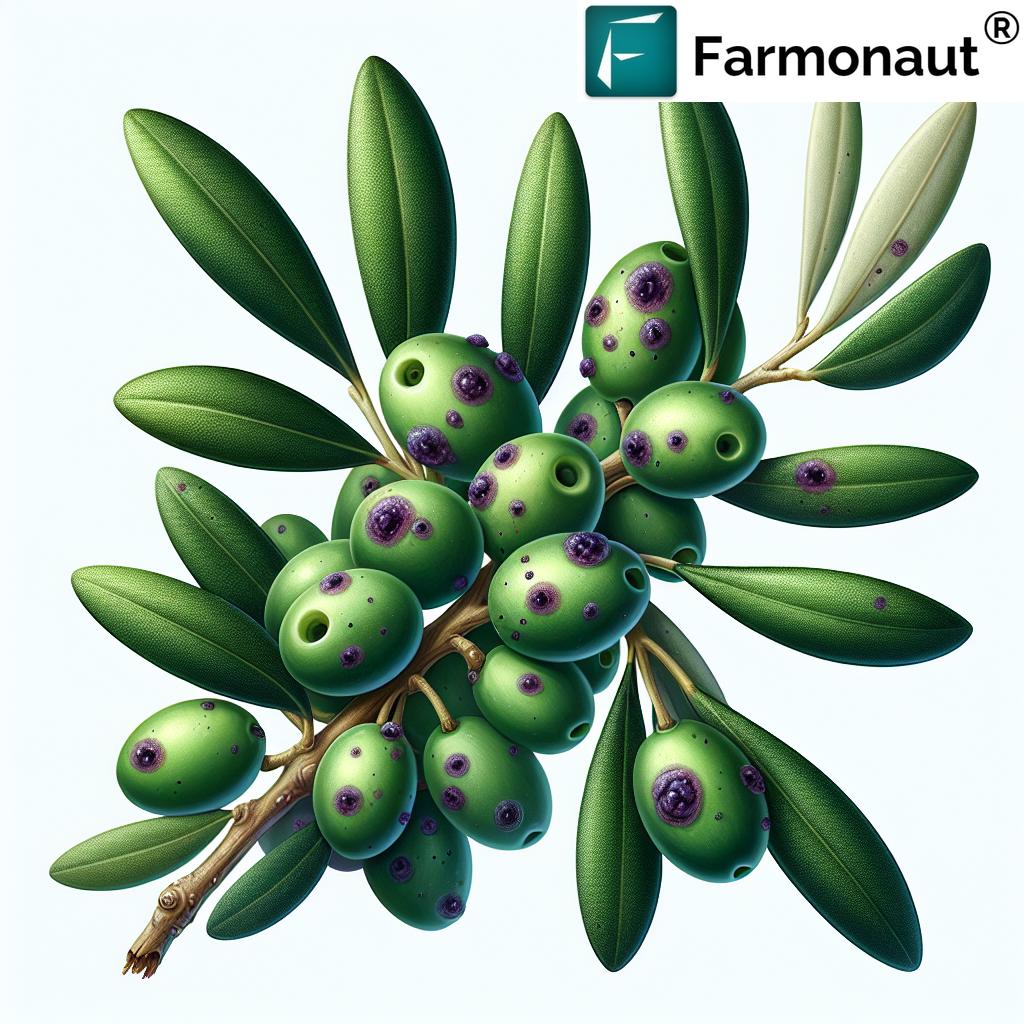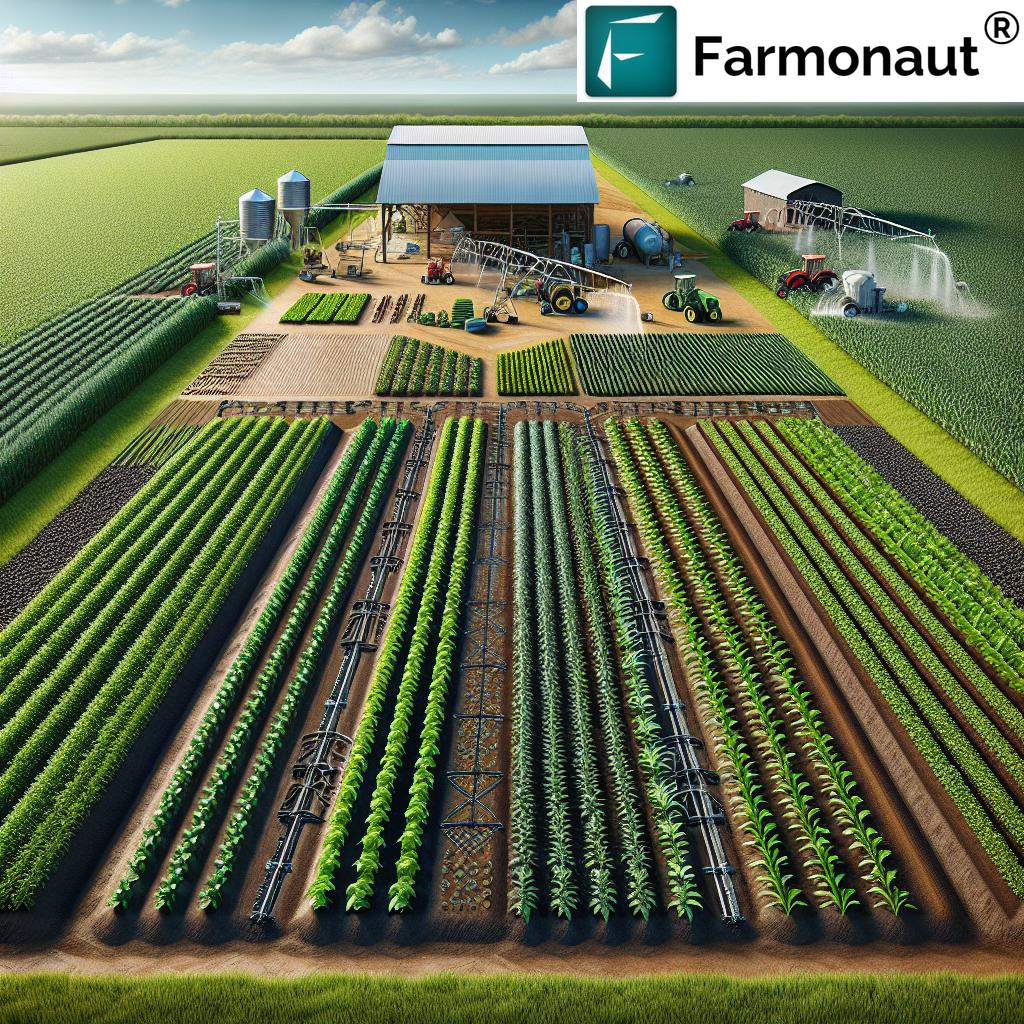Business Model Analysis of Precision Agriculture Technology Providers in 2025
“60% of precision agriculture providers will adopt subscription-based models by 2025, transforming technology access for farmers.”
Precision agriculture technology is revolutionizing the agriculture sector by enabling more efficient, sustainable, and profitable farming practices. In 2025, understanding the business model analysis of precision agriculture technology providers is crucial for investors, farmers, and policymakers as the market experiences global food demands against a backdrop of climate change and resource constraints. With advanced data analytics, IoT devices, AI-powered solutions, and remote sensing, these providers deliver high-value solutions that optimize crop yields, reduce input costs, and promote sustainability.
In this comprehensive analysis, we’ll explore the core business models underpinning leading precision agriculture technology providers for 2025 and beyond—covering their value propositions, customer segments, revenue streams, key partnerships, cost structures, technological trends, challenges, and opportunities. We’ll also profile Farmonaut, a leader in satellite-enabled agricultural solutions, to illustrate how such providers are uniquely positioned for growth in a technology-driven agricultural landscape.
Table of Contents
- Value Proposition of Precision Agriculture Providers
- 2025 Market Overview & Trends
- Customer Segments & Adoption
- Revenue Streams & Business Models
- Strategic Partnerships & Ecosystem
- Cost Structure & Investment Priorities
- Technological Trends Shaping Precision Agriculture
- Challenges, Barriers, and Opportunities
- Comparative Business Model Overview Table: Leaders in 2025
- Farmonaut’s Business Model: Satellite-Driven Precision Agriculture
- Frequently Asked Questions (FAQ)
- Conclusion
Value Proposition of Precision Agriculture Providers
The value proposition of precision agriculture technology providers in 2025 centers on empowering farmers, agribusinesses, and institutions to make data-driven decisions that enhance productivity, improve sustainability, and optimize resource use from soil to supply chain.
- Enhanced Decision-Making: Precision agriculture solutions leverage advanced analytics, AI, and remote sensing to provide real-time and predictive insights into crop health, soil conditions, water use, and input requirements.
- Resource Optimization: By monitoring variables such as weather, soil moisture, and crop development, farmers can reduce unnecessary use of fertilizers, pesticides, and water, lowering both environmental impact and operational costs.
- Sustainability & Compliance: These providers help clients comply with evolving environmental regulations and consumer demand for eco-friendly produce, including enabling access to carbon footprint tracking and carbon farming opportunities.
- Yield Maximization: Predictive tools optimize yield and quality, directly boosting demo output and profitability.
- Traceability & Transparency: Some platforms also integrate blockchain-based traceability for supply chain integrity, ensuring authenticity and food safety.
- Scalability: SaaS and API-driven models allow solutions to scale from smallholder farms to large enterprises and government programs.
In summary, the core value lies in maximizing operational efficiency, yields, and profit, while reducing inputs and environmental impact.
2025 Market Overview & Trends in Precision Agriculture
- Increasing Demand: By 2025, the global population is expected to surpass 8.1 billion, further accelerating food production demands and challenging conventional agricultural models.
- Climate Resilience: Precision agriculture offers adaptive solutions to combat climate change impact—from water conservation in drought-prone regions to monitoring weather extremes.
- Tech Convergence: The convergence of IoT devices, mobile platforms, AI analytics, and satellite technologies makes actionable insights more scalable and affordable than ever.
- Hybrid Revenue Streams: Providers are blending recurring SaaS/software revenue with upfront equipment sales and data-based monetization to ensure business resilience.
- Regulatory Drivers: Governments increasingly incentivize sustainable practices, data sharing, and precision farming adoption through grants/credit programs.
- Emphasis on Data:
“Data-driven solutions will comprise 70% of new precision ag product launches in 2025, emphasizing advanced analytics.”
Explore Farmonaut’s platform for large scale satellite crop monitoring and farm management. Farmonaut enables remote and real-time insights across farming operations.

Customer Segments & Adoption in the Business Model Analysis of Precision Agriculture Technology Providers
The primary customers in the business model analysis of precision agriculture technology providers in 2025 are diverse:
- Large Farms and Agribusiness Enterprises: Early & major adopters, capable of investing in advanced hardware, software, and data-driven platforms for farm management.
- Medium-Scale and Cooperatives: Agricultural cooperatives and mid-sized farms forming critical market segments for precision agriculture providers.
- Smallholder Farmers: Represent the largest untapped segment, especially in developing regions. While affordability and accessibility are challenges, technology providers are also increasingly focusing offerings and pricing models to drive adoption.
- Government Agencies & Institutions: National/state governments and research institutions deploy precision solutions for monitoring food security, managing subsidies, and optimizing resource allocation.
- Financial Institutions: In 2025, banks and insurers utilize satellite-based data for loan verification and crop insurance risk assessment.
- Corporate Clients: Agrifood companies and supply chain stakeholders use precision tools for traceability solutions, resource monitoring, and sustainability compliance.
Providers designing flexible, modular, and multilingual platforms are better positioned to serve these diverse customer segments and thrive in emerging markets.
Farmonaut’s Android and iOS apps enable real-time satellite crop monitoring and advisory—even for smallholders and extension agents—across devices.
Revenue Streams & Business Models in Precision Agriculture Technology
Core Revenue Streams in the Business Model Analysis of Precision Agriculture Technology Providers
- Hardware Sales: Physical devices including sensors, IoT devices, drones, and GPS-guided equipment are sold as upfront investments.
- Software-as-a-Service (SaaS): Subscription-based access to data analytics platforms, farm management software, and decision support tools, usually billed monthly/annually.
- Data Monetization: The sale or licensing of aggregated, anonymized agricultural data for research, risk assessment, or commodity market insights.
- Consulting & Training Services: Charging clients for technology adoption, training sessions, and implementation support to maximize the value of investments.
- Pay-Per-Use Models: Flexible approaches that enable customers (especially smallholders) to pay by acreage monitored, number of drone flights, or amount of data consumed.
- API Access: Sophisticated platforms such as Farmonaut offer APIs for developers and businesses to embed satellite insights in their own solutions. Explore developer documentation.
These hybrid business models combine upfront hardware sales with recurring software and data service revenues, balancing financial stability with client flexibility—critical for international expansion and serving diverse customer segments.
Evolving trends demonstrate that by 2025, over 60% of providers will operate primarily on subscription and SaaS models, transforming how farmers access and pay for advanced agricultural technology.
Strategic Partnerships & Ecosystem in Precision Agriculture
Collaborative Approaches for Enhanced Solutions
Precision agriculture technology providers in 2025 are increasingly reliant on ecosystem integration to thrive. Strategic relationships formed with other market players complement and extend solution offerings.
- Equipment Manufacturers: Integrating with major machinery and hardware producers ensures seamless adoption and greater compatibility with on-ground farm operations.
- Satellite Data Companies: For advanced remote sensing and satellite imagery, precision ag platforms incorporate multispectral and hyperspectral data from leading providers.
- Telecommunications Providers: 5G and advanced networking are necessary for real-time data flows from remote rural areas.
- Financial Institutions: Access to affordable credit and insurance for technology adoption is often unlocked through provider-financier collaboration. Explore satellite-based crop loan and insurance verification.
- Cooperatives, Governments, and NGOs: Partnerships with local organizations enable scalable rollout, especially in emerging markets and smallholder-focused programs.
Optimize your machinery and fleet operations with Farmonaut’s fleet management solutions for agriculture, integrating satellite monitoring, route tracking, and fuel efficiency analytics.
Such partnerships reduce technology adoption barriers, expand reach, and enrich the core offerings that helping farmers combat productivity challenges across changing landscapes.
Cost Structure & Investment Priorities
The primary costs in the business model analysis of precision agriculture technology providers typically include:
- Research & Development (R&D): Strong focus on technological innovation, data science, and AI/ML capabilities—significant upfront costs that are essential for constant solution evolution.
- Hardware Manufacturing & Procurement: Sourcing components for sensors, drones, IoT devices, and integrating them effectively with core technology platforms.
- Cloud Infrastructure & Data Storage: Secure and scalable cloud computing resources are needed to store, process, and serve vast volumes of farming and remote sensing data.
- Customer Support & Training: Investment in customer support, extension services, and training materials ensures clients maximize solution value.
- Marketing & Distribution: Reaching diverse markets, especially developing regions, entails significant educational outreach and localization efforts.
While high upfront R&D investments create barriers for new entrants and build intellectual property (IP) moats, variable scaling costs for cloud and support allow leading providers to serve both developed and developing segments efficiently.
Technological Trends Shaping Precision Agriculture Providers in 2025
AI, IoT, and Remote Sensing at the Forefront
- Satellite Imaging and Remote Sensing: Modern multispectral satellites detect soil health, crop stress, carbon emissions, and more—enabling real-time and predictive analytics for field-level decision-making.
-
Artificial Intelligence & Machine Learning: AI algorithms predict pest outbreaks, water needs, weather events, and generate yield forecasts with increasing accuracy.
- IoT Sensors and Automated Machinery: Deployed across farms, these devices provide granular data on soil moisture, temperature, fertilizer use, fleet movement, and equipment efficiency.
- 5G and Edge Computing: Enable more devices in the field to communicate in real-time, unlocking greater precision and immediate alerts.
- Blockchain Traceability: Provenance, traceability, and anti-fraud solutions are ramping up in 2025—Farmonaut’s blockchain-powered traceability stands as a premier example.
- Environmental Impact Tracking: Systems for carbon footprint monitoring, biodiversity metrics, and ecological stewardship are now mainstream for compliance and sustainable branding.
This fusion of technologies positions providers at the center of the evolving agriculture landscape, delivering both immediate operational efficiencies and long-term sustainability gains.
Developers and businesses: Embed satellite crop data and analytics in your systems with Farmonaut’s API Platform. Get the API documentation here.
Challenges, Barriers, and Opportunities for Precision Agriculture Providers
Barriers to Adoption and Growth
- Cost Barriers for Smallholders: Upfront device purchase, platform subscription, and scalability remain hurdles, particularly in developing markets.
- Data Privacy and Ownership: As data-driven services become standard, concerns about ownership, privacy, and the use of aggregated agricultural data intensify.
- Interoperability: A fragmented technology landscape means that devices and software are not always compatible, complicating farm management for integrated operations.
- Digital Skills Gap: Rural populations may lack the exposure or access to training for using sophisticated solutions. Providers that offer localized support and intuitive interfaces will have an edge.
- Policy and Regulatory Uncertainty: Evolving certification, subsidy, and privacy regulations can delay technology adoption and add compliance complexity.
Emerging Opportunities
-
Scalable, Affordable Solutions: New SaaS, pay-per-use, and API-integrated models are breaking down barriers for emerging markets and smallholder segments.
For example, Farmonaut’s web and mobile platforms allow farmers worldwide to access satellite-driven insights at an affordable rate. - Carbon Markets & Sustainability: With carbon credits and environmental tracking becoming central to agri-policy, providers who facilitate carbon footprinting and regenerative practices will become indispensable.
- Government Incentives: Many countries are increasing grants and support for precision agriculture adoption, opening new streams for provider growth.
- Next-Gen Data Services: The analytics layer—predictive, hyperlocal, multimodal—creates new value and monetization opportunities across food supply chains.
Discover Farmonaut’s forest and crop plantation advisory platform—tailored for large-scale, regenerative, and diversified farm operations.
Comparative Business Model Overview Table: Leaders in Precision Agriculture 2025
| Provider Name | Revenue Model | Core Technology Offerings | Target Customer Segments | Estimated Market Share 2025 (%) | Sustainability Integration | Innovation Highlights |
|---|---|---|---|---|---|---|
| Farmonaut | Subscription, API Licensing, SaaS | Satellite imaging, AI analytics, blockchain traceability, resource/fleet management | Diverse—individuals, agribusiness, government, financial institutions | 16* | Carbon tracking, environmental impact monitoring, regenerative advisory | Affordable insights; Jeevn AI advisory; blockchain-based traceability; scalable cross-sector platform |
| Provider X | Hardware sales, SaaS, consulting | IoT soil sensors, drone imaging, equipment management platforms | Large-mid farms, cooperatives | 14* | Precision irrigation, soil health monitoring | Patented sensor networks, variable-rate input deployment |
| Provider Y | Pay-per-acre, data licensing, SaaS | Drone fleet, AI crop modeling, weather analytics | Cooperatives, large producers, research institutions | 10* | GHG measurement, climate-smart farming | Yield prediction AI, automated drone swarms |
| Provider Z | Hardware; hybrid SaaS; marketplace | Sensor integration, robotics, farm management suite | Enterprise; growing presence in emerging smallholder | 8* | Water footprint analysis, biodiversity scores | Integrated robotics platforms, open API ecosystem |
*Market share values are estimates for demonstrational purposes.
Farmonaut’s Business Model: Satellite-Driven Precision Agriculture Solutions in 2025
As a leading satellite technology provider, Farmonaut is transforming agriculture, mining, infrastructure, and defense sectors with its real-time insights, modular platforms, and AI-powered advisory capabilities. Here’s how our unique approach fits within the business model analysis of precision agriculture technology providers:
- Technologies: We utilize advanced multispectral satellite imagery, AI/ML algorithms, and blockchain to deliver solutions—from large-scale farm oversight to plantation advisory and resource management.
-
Subscription-Based Model: Users, businesses, and governments can subscribe to monitoring services based on required scope, frequency, and data depth.
Explore Farmonaut’s subscription plans below for up-to-date pricing:
- API Licensing: Businesses and developers can incorporate our AI and satellite data directly into their platforms and tools, accelerating adoption and innovation throughout the agricultural value chain. See the API details.
- Core Offerings: Carbon footprint monitoring, blockchain traceability, fleet/resource management, and large-scale enterprise dashboard integration.
- Target Audiences: Our multi-tiered platform serves everyone from individual smallholders to corporate clients and government institutions, supporting broad scalability.
- Affordability and Sustainability: Farmonaut’s mission is to democratize access to precision agriculture intelligence—lowering cost barriers to advanced farming solutions and enhancing the sustainability of agriculture worldwide.
Frequently Asked Questions (FAQ) about Precision Agriculture Technology Providers
Q1: What is a precision agriculture technology provider?
A precision agriculture technology provider delivers advanced tools and services—often combining hardware (sensors, drones, IoT), software (analytics, farm management), and data (satellite, weather)—to help farmers and agribusinesses optimize crop yields, resource use, and sustainability.
Q2: How do revenue models differ among precision ag providers?
Revenue models vary from upfront hardware sales to recurring SaaS subscriptions, pay-per-use/adoption, and data or API licensing. Many 2025 providers are adopting hybrid approaches that combine these streams for more stable growth.
Q3: Why is data analytics central to modern precision agriculture?
Data analytics powers real-time insights, predictive modeling, and adaptive recommendations—enabling growers to maximize yields, minimize costs, and remain resilient amid climate and market shifts.
Q4: What challenges affect smallholder farmer adoption?
Barriers include cost, connectivity, digital skills, fragmented solution offerings, and lack of localized support. Leading providers address these through affordable SaaS options, mobile interfaces, and scalable support.
Q5: How are sustainability and carbon tracking integrated?
Top providers offer carbon monitoring and environmental impact analytics as core services—helping farms comply with regulation, meet buyer demand, and monetize environmental stewardship through carbon markets.
Q6: How can I access data or integrate solutions from Farmonaut?
You can subscribe to Farmonaut’s dashboards via web, Android, or iOS apps, or use our API for direct integration. Try our apps or explore API integration.
Conclusion: Shaping the Future of Agriculture through Data, Innovation & Sustainability
The business model analysis of precision agriculture technology providers in 2025 reveals a rapid evolution: from hardware-driven sales to dynamic, SaaS- and API-powered hybrid models. As agriculture contends with global food demands, climate pressures, and resource constraints, providers that deliver scalable, affordable, and sustainable solutions—rooted in data, analytics, AI, and remote sensing—will define the next era of agricultural productivity and resilience.
Key success factors include:
- Delivering measurable operational value in both yields and cost reduction.
- Helping clients comply with sustainability and traceability demands, such as carbon credits and regulatory reporting.
- Serving diverse customer segments via flexible pricing, intuitive platforms, and robust support.
- Continuous investment in technological innovation and R&D to remain competitive.
As showcased by Farmonaut and fellow innovators, the future of precision agriculture is digital, data-driven, and sustainable—empowering farmers, cooperatives, and governments to optimize output for a growing, resource-constrained world.
Ready to revolutionize your farming or agribusiness operations? Access Farmonaut’s platform now for affordable, real-time satellite crop monitoring, environmental impact analytics, and blockchain traceability.
Reimagine your agricultural future with the latest precision, sustainability, and data-driven intelligence—unlock the full potential of 2025’s precision agriculture technology revolution.













